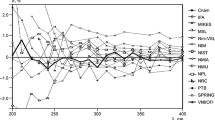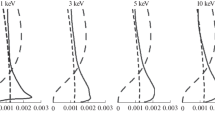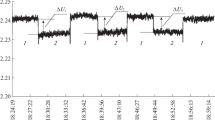Abstract
An apparatus has been developed in the Radiation Laboratory of the Meteorological Office at Poona for the measurement of absorption due to atmospheric water vapour in the near infra-red region of the solar spectrum by means of a cathode ray oscillograph. The working principle of this apparatus and the object for which it was developed are entirely different from those described by Daly and Sutherland and by King, Temple and Thompson1, and it was developed independently of their work. A short paper describing it was read by me at the symposium on “Atmospheric Processes” held at the Royal Institute of Science, Bombay, under the auspices of the National Institute of Sciences of India in August 1946. This paper is at present in course of publication in a special issue of the Transactions of the National Institute of Sciences of India.
Similar content being viewed by others
References
Daly, E. F., and Sutherland, G. B. B. M., Nature, 157, 547 (1946); King, J., Temple, R. B., Thompson, H. W., Nature, 158, 197 (1946). See also Nature, 153, 591 (1946).
Author information
Authors and Affiliations
Rights and permissions
About this article
Cite this article
MOMIN, A. Use of the Cathode Ray Oscillograph for Studying the Near Infra-Red Solar Spectrum. Nature 160, 130–131 (1947). https://doi.org/10.1038/160130a0
Issue Date:
DOI: https://doi.org/10.1038/160130a0
- Springer Nature Limited
This article is cited by
-
A cathode-ray spectrograph for studying emission and absorption spectra
Proceedings of the Indian Academy of Sciences - Section A (1948)





